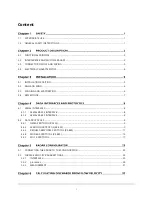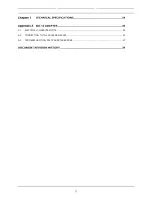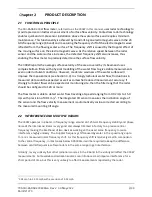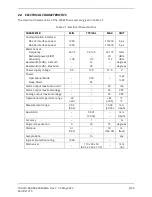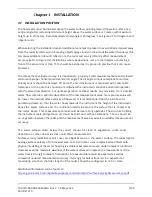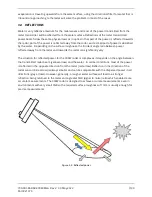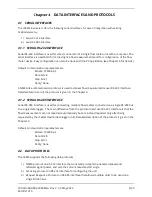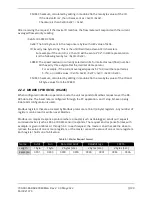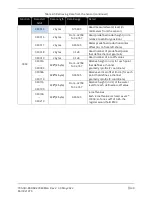
700-SDI-RADAR-300W-Man Rev 2 30 May 2022
2
/39
Part# 21370
PRODUCT DESCRIPTION
2.1
FUNCTIONAL PRINCIPLE
The SDI-RADAR-300W
flow meter
, referred to as the 300W in this manual,
uses radar technology to
provide precise contactless measurement of surface flow velocity. Contactless radar technology
enables quick and simple sensor installation above the water surface and requires minimum
maintenance. This functionality is achieved by transmitting an electromagnetic wave in the 24
GHz frequency range (K-band) and measuring the frequency shift of the electromagnetic wave
reflected from the flowing water surface. The frequency shift is caused by the Doppler effect of
the moving surface on the electromagnetic wave. As the relative speed between the radar
sensor and the water surface increases, the detected frequency shift also increases, thus
enabling the flow meter to precisely determine the surface flow velocity.
The 300W reports the average surface velocity of the area covered by its beam and uses
complex Kalman filters with physical modelling of the water flow to give stable measurements
even under turbulent conditions. However, moderate waviness of the water surface will
improve the measurement (see Section 3.4). In strongly turbulent water flow, fluctuations in
measured data could be expected as well as somewhat reduced measurement accuracy. If
strongly turbulent flow can be expected at monitoring site, then the filter length of the radar
should be configured to 120 or more.
The flow meter is able to detect water flow traveling at speeds ranging from 0.02 m/s to 15.0
m/s with precision of 0.01 m/s
. The integrated tilt sensor measures the inclination angle of
the sensor and the flow velocity measurement is automatically cosine-corrected according to
the measured mounting tilt angle.
2.2
INTERFERENCE AND MULTIPLE RADARS
The 300W operates in K band, in frequency range around 24.125 GHz. Frequency stability and phase
noise of the internal oscillator is very good and always trimmed in factory to a precise central
frequency making the likelihood of two devices working on the exact same frequency to cause
interference highly unlikely. The Doppler frequency shift caused by water in the speed range up to
15 m/s is measured in kHz frequency shift. As this frequency shift is relatively small in comparison
to the central frequency, in most cases below 0.00005%, it will be required to keep the difference
between central frequencies of two radars in the same range to get interference.
Similarly, is very unlikely that other radiation sources in the K band in the vicinity will affect the 300W
measurements. Some wideband radiation sources can introduce small impulse interference for a
short period of time, but this is very unlikely to affect measurements reported by the radar.
1
0.04 mph to 33.55 mph with a precision of 0.02 mph



